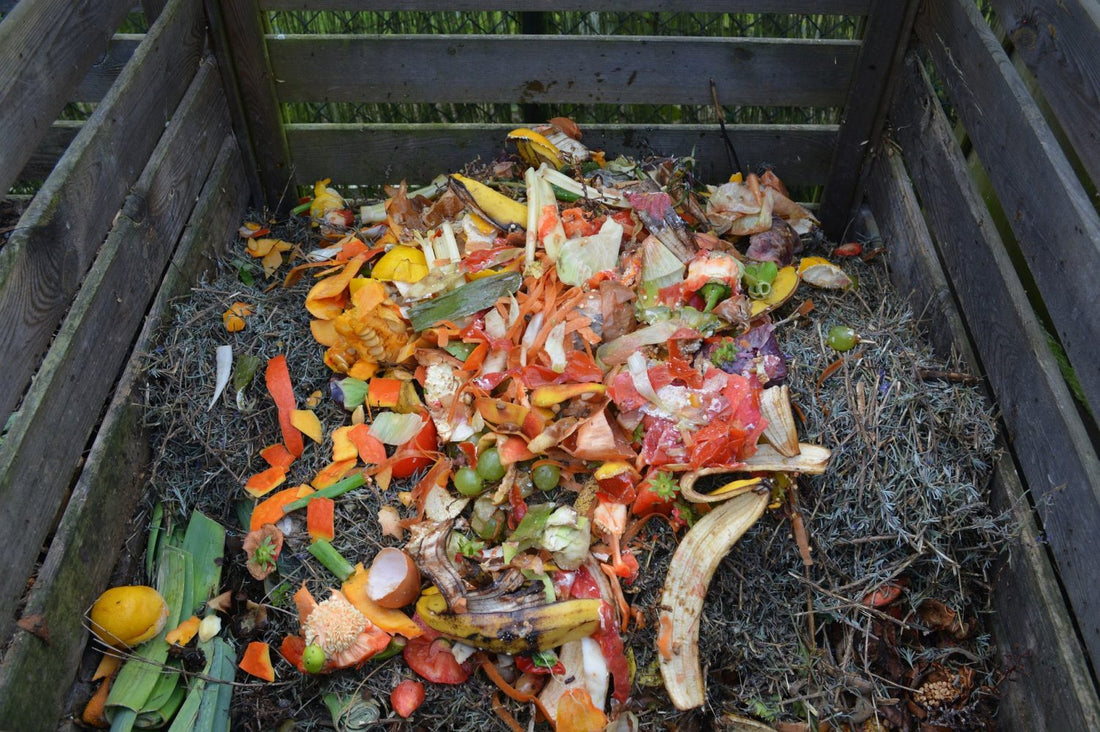This is part II of a 3-part article series on the importance of standardized raw materials when manufacturing organic hydroponic nutrients. Part I looks at using manure and molasses. Part II focuses on the trouble that soilless farms tend to face when using kitchen waste/compost as a nutrient input.
The Benefits of Kitchen Waste/Compost

Image source
Globally, middle and low-income countries generate 53% and 57% food and green waste, respectively, with organic waste increasing in tandem with economic development. Zooming into the US, the largest input that goes into landfills across the country is food waste, yard trimmings and other organic matter. To put this into even more perspective, the U.S. Environmental Protection Agency has stated that an American family of four throws out 40% of food purchased, which is equivalent to $1,600.00 (USD) per year.
Kitchen waste which is turned into compost is a nutrient-rich food product for farms because not only does it help improve soil for soil-based farmers, but it also contains a range of nutrients that crops need. Simply put, composting is how recycled food waste is decomposed into a number of mineral elements which are then funneled back into the natural food system. For some composting processes, there is the usage of worms and other organisms (e.g. enzyme) which help speed up the composting process, creating even more nutrient-rich fertilizers for farms as typically a soil drench. You may ask what is a soil drench... Follow us.
What is a Soil Drench?
Soil drenches are fertilizers that are intended for soil application because of their intention to deeply target treatments for plants. Used often as insecticides and fertilizers, they are typically formulated to focus on a specific nutrient need. Fish emulsions and hydrolysates, high amino acid nitrogen fertilizers, compost tea, and others are poured directly over a well hydrated plants’ roots near the stem or trunk. This allows for a very targeted application to prevent the nutrients from extending to other plants nearby in the soil. Fertilizers typically used as a soil drench are great for soil as they tend to be thicker, more viscous, and have organic matter that the soil is capable of breaking down these forms of carbon into minerals over a longer period of time. This is an important reason as to why soil drenches haven’t been easily incorporated as a nutrient source for soilless or hydroponic systems.
The Risks of Kitchen Waste/Compost for Soilless Farmers

Image source
- Clogging of a farm’s irrigation system – When compost tea is used untreated in a hydroponic system, farms run the risk of the generation of “biota”, an environment colonized by an immense diversity of microorganisms. The result is the potential clogging pumps, pipes, etc.
- Risk of pathogens being present – In many ways compost is effective at eliminating certain types of pathogens. However, it also has the capacity to become a breeding ground for some other dangerous human pathogens, such as aspergillosis. A report found that this risk does reduce in larger windrow compost piles due to self-heating. But this assumes that it has been properly managed.
- Dependence on expensive, time-consuming, and short-lived sterility methods – As per #2 above, composting will have organic matter, which at times, may include items such as bone meal, worm castings, and even bat droppings. All of these will run the risk of introducing bacteria into a farm that can be a mix of beneficial and adverse to one’s system. One way to stop this is by using a disinfectant such as hydrogen peroxide. However, this is an expensive, time-consuming, and short-lived method for many farms to continuously maintain a oxygenated environment with high water quality. Water quality is incredibly important to the plant’s health and root system and we already are one-step ahead of you. Watch for our upcoming series on Water Quality soon!
- Organic matter is not often plant-available and requires more time for further digestion - Compost is considered a slow-release source of nitrogen. At the end of the composting process, most of the nitrogen that remains is bound into organic forms thus it’s not readily available for plant uptake. In order to meet a crop’s nitrogen needs, compost are usually applied at high rates. What this then leads to is a deficiency in phosphate and magnesium, which then forces a farm to top those nutrients. This could potentially lead to excess applications if not done correctly.
Being Selective About the Raw Ingredients in A Farm’s Organic Hydroponic Nutrients
In Part III of this series, we will break down a final raw ingredient that soilless farms should be mindful of when selecting their organic hydroponic nutrient. There is always a chance to better understand what we’re feeding our crops.

